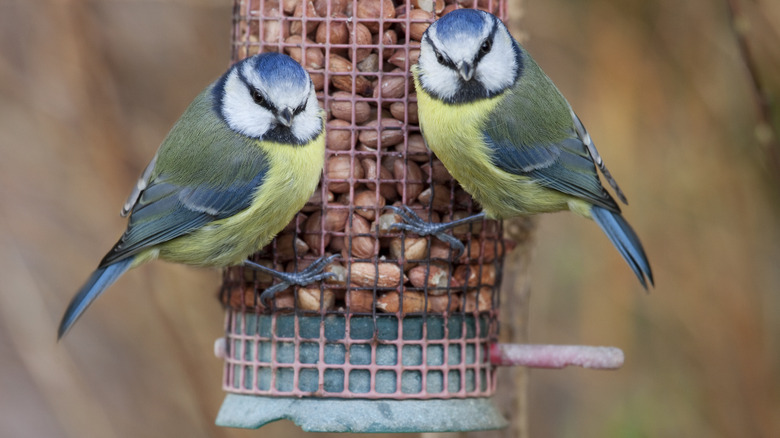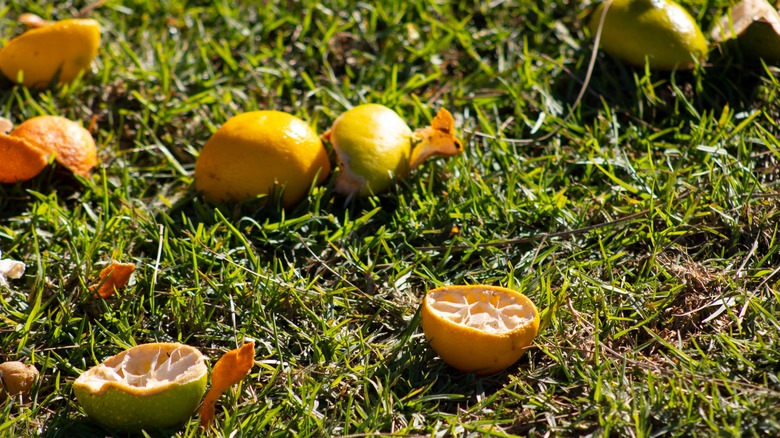Why You May Want To Throw A Few Citrus Peels Around Your Bird Feeder
For bird enthusiasts, creating an inviting space for feathered visitors is a joy. However, a common challenge that arises is the presence of cats, which can turn your bird feeder into an unintended hunting ground. The instinctual behavior of cats to stalk and capture birds poses a threat to the avian guests, disrupting the tranquility you seek in your backyard. Luckily, citrus peels hold the promise of transforming your garden into a cat-free sanctuary, keeping your feathered friends safe. Further, this trick can also be used to keep cats out of your garden beds, displaying how versatile and helpful it can be.
One might wonder, why are citrus peels, the vibrant remains of your limes, lemons, and oranges, considered the antidote to the perpetual feline presence around bird feeders? The answer is grounded in the remarkable power of scent. Citrus fruits release a fragrant bouquet that is delightful to human senses but has an entirely different effect on our feline companions. Many cats find this scent to be too overwhelming for their strong sniffers, serving as a natural and unobtrusive deterrent. When you strategically scatter these citrus peels around your bird feeder, you're essentially establishing a fragrant force field that deters curious cats from approaching. This uncomplicated method serves as an effective deterrent, ensuring that your feathered friends can enjoy the bird feeder without the interference of curious feline visitors.
How to use citrus peels to benefit your bird feeder
If you want to test out this hack, after indulging in citrus fruits like oranges, lemons, or grapefruits, collect the peels and allow them to air-dry for a day or two. The drying process concentrates the citrusy aroma that cats find unpleasant. Once dried, strategically place the peels around the base of your bird feeder, creating a natural barrier. It's important to refresh the peels every few days to maintain their potency. Embracing this approach not only protects the birds but also aligns with eco-friendly practices, offering a harmonious solution that shouldn't harm cats, any other animals, or the environment.
Another way to use this hack is to hollow out an orange or grapefruit half and turn it into a bird feeder. Fill the hollowed-out peel with birdseed, pierce two holes opposite one another on either side of the peel, tie strings of twine through the holes, and hang it wherever you would like. However, Wag! says that citrus fruits are toxic to cats if ingested. Therefore, you may want to watch your outdoor pets or strays to ensure they don't eat the peels, though this is unlikely to happen since they hate the scent. If you still find that using citrus isn't quite doing the trick, you may also want to elevate your feeder or use other methods to keep cats away from your birds.

